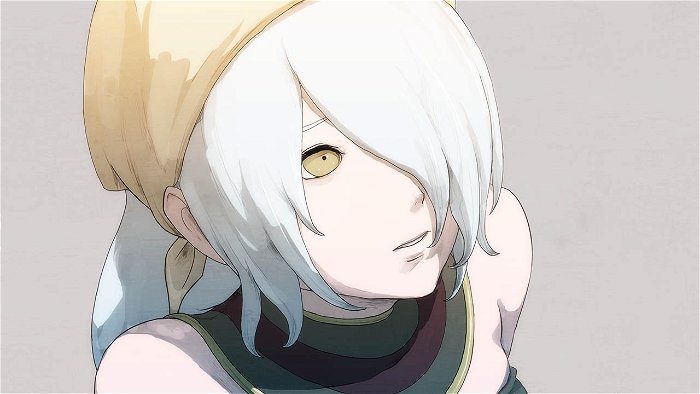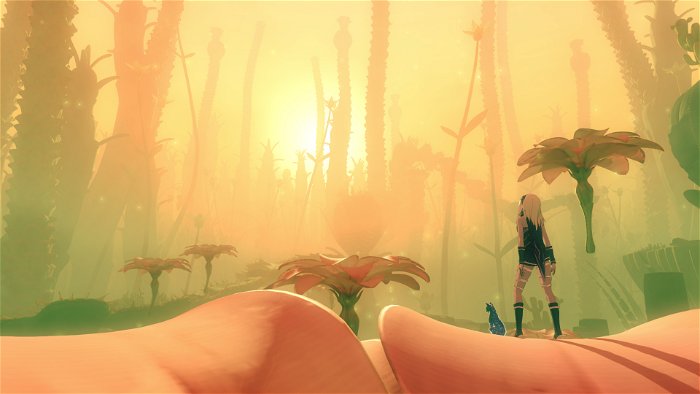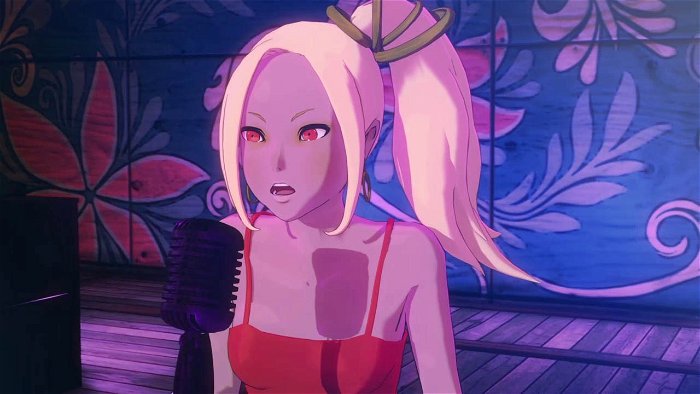Perhaps the most telling difference between the reception of Gravity Rush 2 in its Eastern and Western release is its title. For the game’s release in the West, its original Japanese title Gravity “Daze” was changed to Gravity “Rush.” The change seems to perfectly brand the West’s misunderstanding of the game: where the Japanese title reflects lead character Kat’s experience with the world, the Western title uses the word “rush” to simply advertise the game’s action gameplay. But Kat’s time in the innocent city of Hekseville or the bustling floating isles of Jirga Para Lhao isn’t just about flying around, drop kicking evildoers. It is a day-to-day struggle of self-identity—a struggle that’s gravitationally punch-drunk by the physics, social structure, and mysteries of the world around her. Gravity Daze fits; it is a double entendre on the word “days” and the feeling of being “dazed.” It’s hard to argue that the game’s Western title is more than a narrow attempt at selling an action hero, when it should be selling the modern woman.

This humbled approach is quintessentially Japanese, and almost regrettably so, considering that even the game’s creators contemplated whether or not the game was “too Japanese.” At a CEDEC presentation around the release of the first Gravity Rush, Naoko Sato, the lead scenario writer for the series, expressed his initial worries that the Japanese sensibilities of having a female heroine, a fictitious city as the main stage, a cartoonish art style, and an imaginary language might be disadvantages when marketing the game abroad. The writer also noted that lead characters that are tough adults are preferred overseas, whereas the Japanese regard youth and childishness as sacred.
With Gravity Rush 2 being all the more Japanese than its predecessor, the divide has never been more evident, both critically and commercially. Premier Japanese publications like Famitsu have given it a near perfect score, whereas equivalent names in the West have given the game a mixed reception, citing a clunky camera and a flawed narrative. Even more jarring is the fact that Gravity “Daze” 2 debuted at number one on the Japanese sales chart and number 16 on the UK’s. But say sayonara to all that—Gravity Rush 2 is very Japanese, and let it be. Let the market play catch up. From the distinct Japanese selection of colour and tones, to the love of the cat and the jazzy tickity-tack-tack of the high-hat—the following are five Japanese-isms to aid in understanding this lovely game.
1) Youth and the Daily Grind
As writer Sato said, the children of Japan receive attention in a way they don’t in the West. They are taught about conscientiousness, community, and independence at a very early age. Students can be seen cleaning up their school daily, or even commuting long distances to school by themselves at age seven. The media and entertainment reflect that; nearly all of the top 10 highest-grossing films in Japan are about children growing up and coming to terms with reality. In the same way that Kiki in Hayao Miyazaki’s famous Kiki’s Delivery Service comes to a new town and finds a place of her own, so too does Kat first come to Hekseville and finds a home. Gravity Rush 2 sees Kat delivering newspapers, helping a friend buy a present, mining for ore to help the poor—to look at only the grand narrative on Gravity Rush 2 would be to miss the point. The game is about the day-to-day. With a heavily employed youth (4 per cent unemployment vs. Canada’s 13 per cent), Gravity Rush 2 captures a very nationalistic plight for Japan’s adolescents.
2) The Colours of Zen

No colour is more prominent in the game than the pale blue sky stretching across its world. Japanese design is rich in this love for the simple colours of nature, and derives from the browns of wood, the greens of plants, and the greys of stone. As a result, the design results in a very simple colour palette that is predominantly neutral. A look at Gravity Rush’s cityscapes will reveal the clay finish of the markets of Jirga Para Lhao, the deep-black soot of the settlements below, the pale-grey highrises, and of course that beautiful blue and white sky stretching above. The colours are representative of an ideology that is also reflected in the physical stuffs of the series: reused furniture. The Japanese have a word for this: shibui. It describes a design that is simple, unadorned, cherishes minimalism, and is related to the word “wabi-sabi,” which describes the nature of the imperfect and transitory character of the world.
3) High Rises That Scrape A Pale Blue Sky
“Compared to Hekseville, it is more vertically long” Keiichiro Toyama, Gravity Rush 2’s creative director, says of the new environment in an interview with Gamereactor. The buildings of Jirga Para Lhao are not only expansive in their horizontal reach, but also their vertical, stretching up into the clouds and down into the depths. It is mystifying to see. Their plain and neutral aesthetic recalls the skylines of Japan’s major metropolitan areas of Shinjuku, Osaka, and Yokohama. It brings to mind the vertical necessity of the country with three times the population of Canada, and 25 times smaller a surface area. With the game’s theme of gentrification and talk of how to split limited area with a diverse populous of super-rich and super-poor, the cement giants seem all the more appropriate. The “emphasis on diversity is something new,” Toyama says of the game.
4-5) Jazz and the Ganguro Girl
Kat is more than just a personification of a cat. The key to her other dimension lies in her “ganguro” design, which displays the rebelliousness of Japanese youth. The popular fashion trend among young Japanese women during the mid-to-late 90s had teens sporting dark tans and light blonde hair as a statement against Japan’s preconceptions of beauty: pale skin and dark hair. The style’s prevalence has since faded, but with cultural impresses like the Gravity Rush series, its spirit proves to live on. Her look is at its best during a sequence where Kat performs to jazz—perhaps due to the musical genre’s kinship with ganguro. Jazz first flirted with Japan in the early 1900s with the overseas trips of American and Filipino jazz bands and gave concern to conservative Japanese elites for its raucous attitude. It eventually developed its own nuances and Zen aesthetic to the point where it has become as Japanese as Japan gets. There’s no better musical choice to fit the rhapsodic and rhythmic beat of Kat’s cool streaks across the sky.

A great culmination of these Japanese-isms can be seen in an official live-action ad for the game. The ad features young students living on their own, clean white high rises, and a magical, gravity-defying cat; it can serve as a great introduction to the game’s spirit for those unfamiliar with the franchise. Sato, upon further contemplation, eventually came to terms with these Japanese-isms. At the end of the 2012 CEDEC presentation, Sato said that he eventually realized this distinctly Japanese quality of the game is a positive—and he’s right.
Regardless of the West’s unreadiness for the game, it is the game’s humble details that endows players with the belief that even defying gravity is possible. As Newton’s discovery of gravity came from a red apple that fell from the sky, Kat is Gravity Rush’s own red apple. She helps her community discover that no matter which way gravity pulls them, if they work together, they can find their way. So do not be blind to the to the cat in Japanese clothing. It has much to offer; a rush of places to take you; more to say. And be open to the game with the full Japanese title of: GRAVITY DAZE 2/Gravitational Dizziness Final Chapter: The End of the Repatriation of the Upper Stratum, Choices That Converged Her Inner Space.




